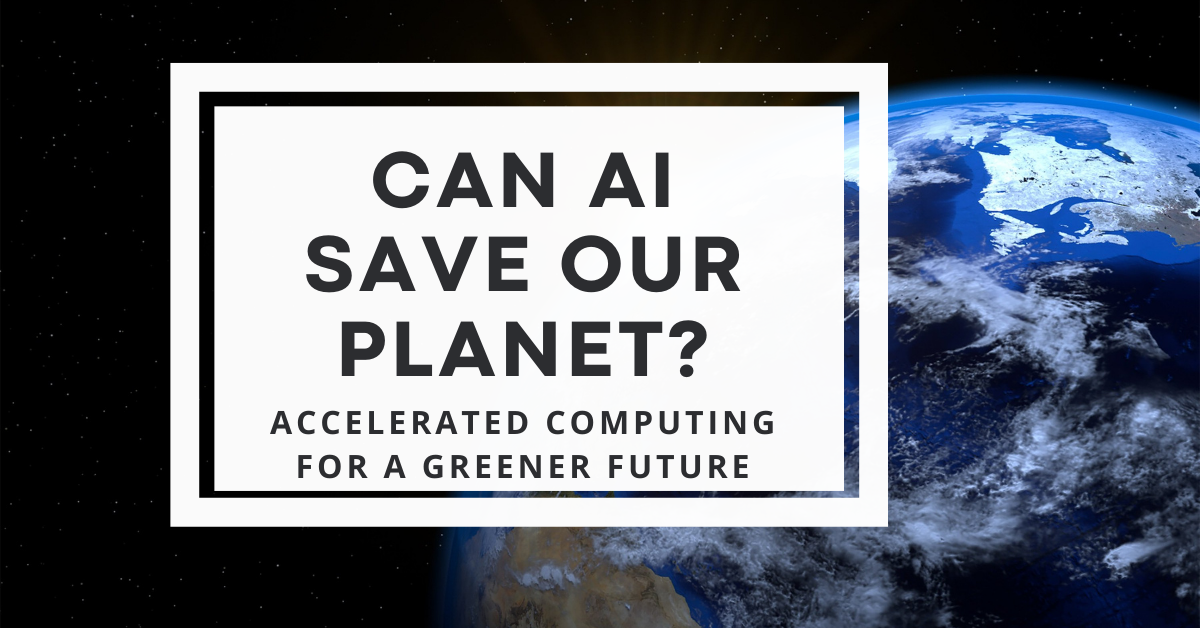In today’s rapidly evolving world, AI and accelerated computing for sustainability are emerging as critical components in addressing pressing environmental challenges. By optimizing energy consumption and reducing emissions, these technologies are reshaping industries and driving a significant shift towards greener practices. The potential for innovation in this area is immense, and organizations that embrace these advancements can make a meaningful impact on global sustainability efforts.
The Power of AI in Energy Optimization
AI’s ability to analyze vast amounts of data quickly and accurately allows for unprecedented levels of energy optimization. For instance, smart grids leverage AI algorithms to predict energy demand more efficiently, adjusting supply in real time. This not only reduces waste but also helps in balancing the load on energy systems, minimizing the risk of blackouts and optimizing resource allocation.

Moreover, AI can enhance energy efficiency in various sectors, from manufacturing to transportation. By employing predictive analytics, companies can identify inefficiencies and implement targeted improvements. For example, in logistics, AI can optimize delivery routes, reducing fuel consumption and emissions. This is where the synergy between AI and accelerated computing shines, enabling complex calculations at lightning speed while using significantly less energy.
Accelerated Computing: A Game Changer for Efficiency

Accelerated computing, particularly through the use of GPUs, is revolutionizing how we approach energy-intensive tasks. These specialized hardware components are designed to perform computations faster and more efficiently than traditional CPUs. According to recent advancements, GPU systems can be up to 20 times more energy-efficient, particularly in AI inference and training scenarios.
This shift towards accelerated computing not only enhances performance but also contributes to substantial energy savings. As industries increasingly rely on AI-driven systems, the integration of GPUs can lead to a remarkable reduction in overall energy consumption. In fact, it has been reported that energy efficiency for AI inference has improved 45,000 times over the past eight years. This drastic improvement demonstrates the potential of accelerated computing to support the growing demand for computational power without compromising our environmental goals.
AI and Climate Solutions: Tackling Global Challenges

The role of AI in combatting climate change cannot be overstated. One of the most promising applications is in weather forecasting and climate modeling. With AI-enhanced systems, accuracy in predicting extreme weather events like hurricanes or floods has significantly improved, allowing governments and organizations to respond more effectively and efficiently. Consequently, better preparedness leads to reduced resource wastage and minimizes damage during such events.
Additionally, the concept of digital twins—virtual replicas of physical systems—has emerged as a groundbreaking tool in energy management. These AI-driven simulations enable businesses to monitor and optimize energy consumption in real time. For example, a recent initiative using digital twins achieved a 10% reduction in energy use for a major company. While this may seem modest, scaling such improvements across multiple industries could yield enormous environmental benefits.
Redefining Data Centers: The Future of Computing
As the backbone of AI technologies, data centers must evolve to become more sustainable. Traditional cooling methods, often energy-intensive, can be replaced by innovative solutions like direct-to-chip liquid cooling. This approach cools systems at the chip level, significantly reducing energy consumption compared to conventional air conditioning methods.
Furthermore, the integration of renewable energy sources into data centers can help mitigate their carbon footprint. As organizations build green data centers, they not only meet the growing demand for computational power but also demonstrate a commitment to sustainability. This dual approach ensures that advancements in AI and computing do not come at the expense of the environment.
Conclusion: A Sustainable Future Powered by Innovation
AI and accelerated computing are more than just technological advancements; they are catalysts for a sustainable future. By optimizing energy use, improving efficiency, and addressing climate challenges, these innovations can lead to significant environmental improvements. As industries continue to harness the power of AI, it is essential to prioritize sustainability and consider the broader impact of these technologies on our planet.
In this era of transformation, organizations that embrace AI and accelerated computing for sustainability not only drive efficiency but also pave the way for a greener world. The journey towards sustainability is not just a responsibility; it is an opportunity to innovate and make a lasting impact on future generations.

